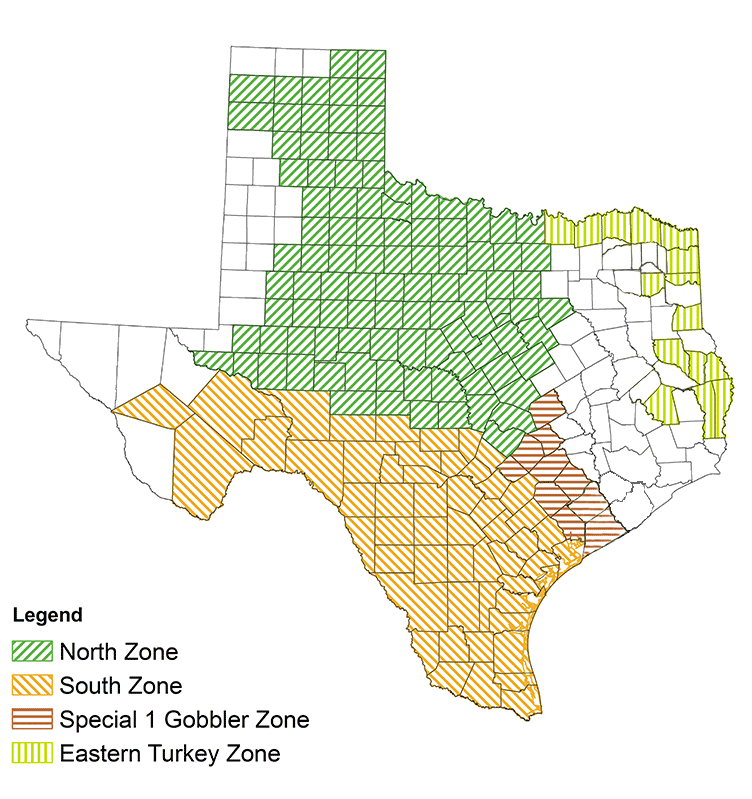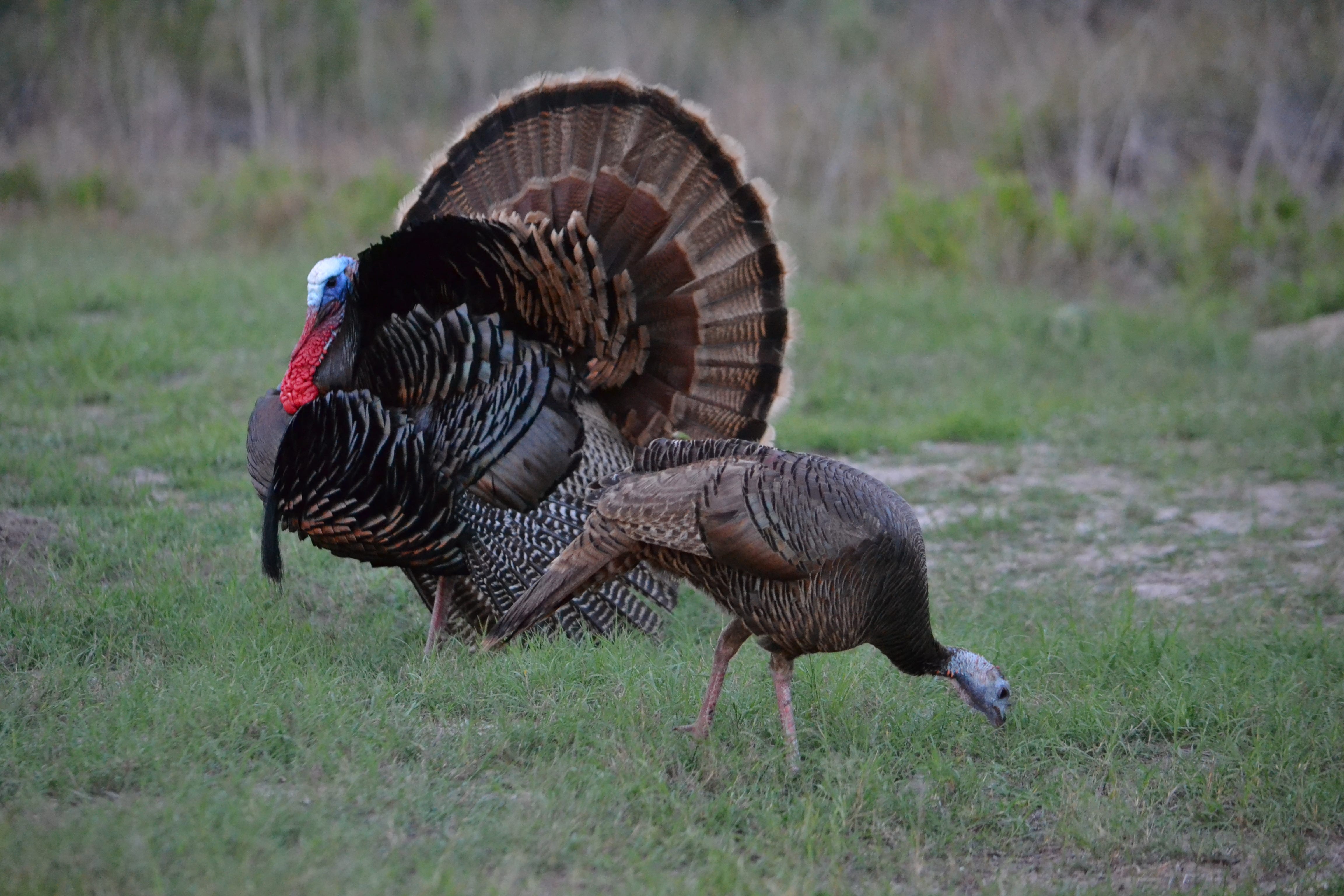Conditions good for spring turkey opener
Story by Nate Skinner for Lone Star Outdoor News
Dry conditions in the spring and early summer of 2018 for much of the state affected turkey production in many areas. This means turkey hunters may encounter fewer jakes this spring, but there are plenty of mature gobblers remaining to pursue the hens.
Blaise Korzekwa, Texas Parks and Wildlife Department biologist for Frio, Zavala and Dimmit counties said reproductive success for turkeys was low in 2018 in South Texas.
“We had above-average recruitment in 2015 and 2016, and we had average recruitment in 2017,” Korzekwa said. “Even though there are not large numbers of jakes running around, there are still strong numbers of mature gobblers available.”
Korzekwa said with the onset of the current vegetation green-up in the South Texas region, hunters can expect to have to compete with hens in order to harvest a tom during the early part of the season.
“With the recent high production of forbs, there is going to be plenty of breed- ing activity when the season commences,” he said.
Actually seeing the birds may be an issue, though, as the green-up has stretched the weeds to more than waist-high in many parts of the state, and heavy morning moisture may keep birds out of some areas.
Hunting guide Clayton Roth guides spring turkey hunts along farm properties in South Texas surrounding Dilley. He claims there are a ton of birds gobbling and on the move in Frio County, including plenty of mature longbeards.
A little farther to the east, avid turkey hunter Clay Wiatrek said he’s seeing decent numbers of gobblers along fields in Karnes County.
“Gobbling and strutting activity is in full force, and the warmer weather really seems to have the birds fired up,” Wiatrek said. “This should make for some exciting hunts with good responses to calls to kick off the season.”

According to TPWD’s Turkey Program Leader Jason Hardin, vegetation in the Hill Country is already greening up as well due to winter rains and mild temperatures.
“These conditions have hens in great shape and ready for nesting season,” Hardin said. “Some hens will be laying and incubating eggs before the season opens, but the majority of hens will be in full breeding mode at the beginning of the season. This means that hunters will have some competition. They may have better success hunting during the late morning and midday hours rather than early in the morning and late in the evening.”
Hardin said turkey in the Hill Country have had little reproduction success in the past two years, due to below-average moisture during the spring and summer. Because of this, he said hunters will encounter few jakes across the landscape.
“Wise, old toms will be the norm this year, and there are good numbers of them out there,” he said. “Some of the best hunting for these mature birds will occur in the middle of the season when most of the hens begin to spend more of their time sitting on nests.”
Owner and operator of Heart of Texas Bowhunting, Kevin Burleson, said he is seeing decent numbers of mature gobblers on the properties he hunts near Putnam in Callahan County.
“There’s not a lot of pressure on these birds so we might have some fast-paced hunts,” Burleson said. “These turkeys have not heard a ton of calls from hunters like they have in other areas of the state.”
TPWD Natural Resource Specialist Dana Wright said there has been an early vegetation green-up in the Texas Panhandle.
“This has prompted turkeys to break up from their wintering roost sites,” Wright said. “Breeding activity will be in full force throughout the region during the early portion of the season.”
For all the season dates and regulations check out TPWD for more information.


